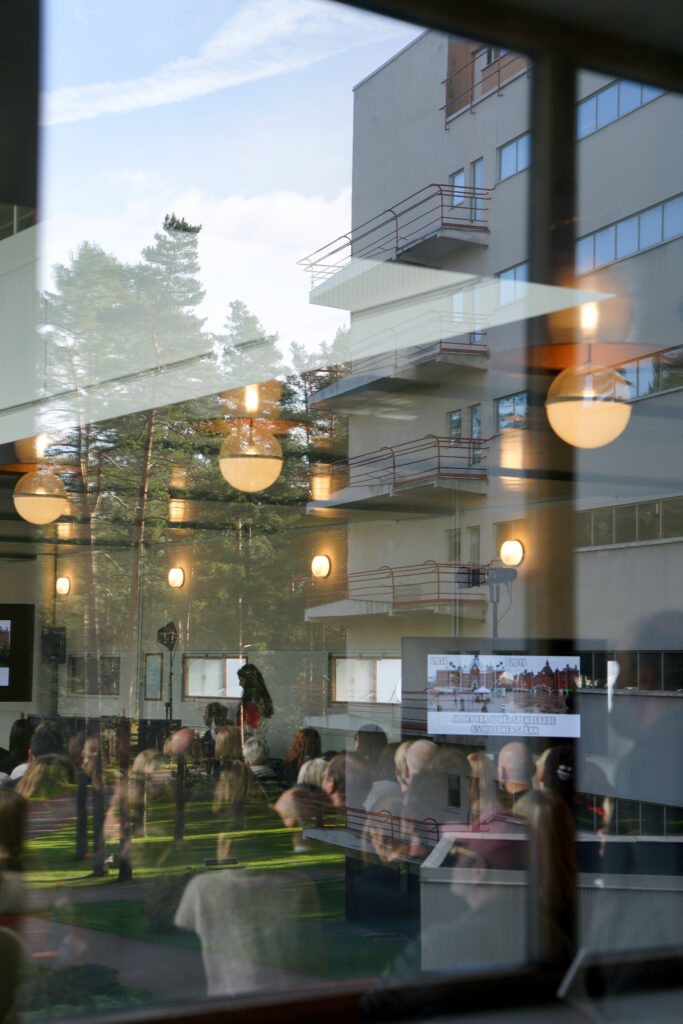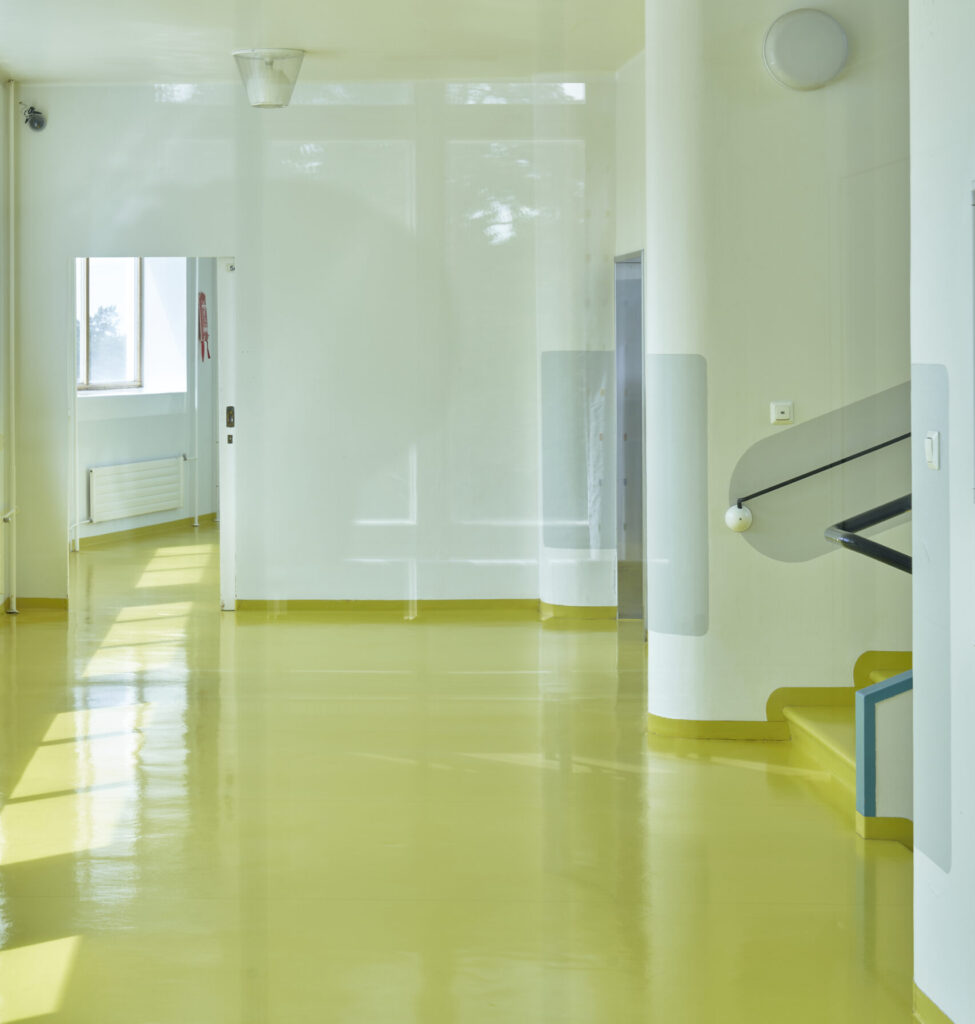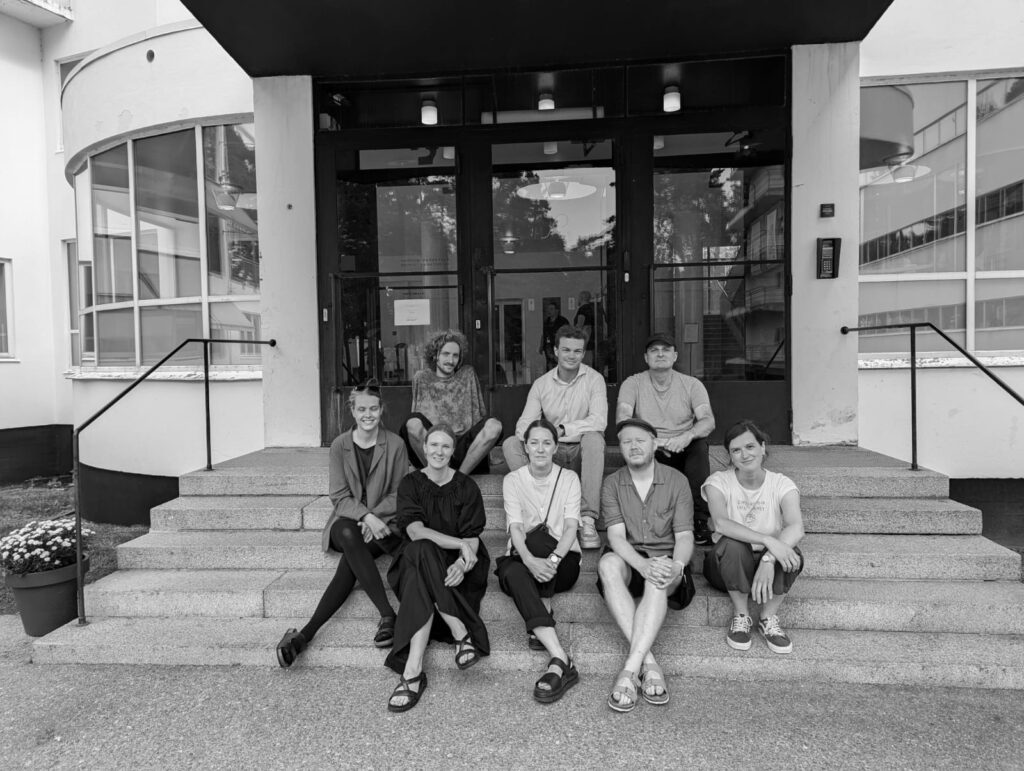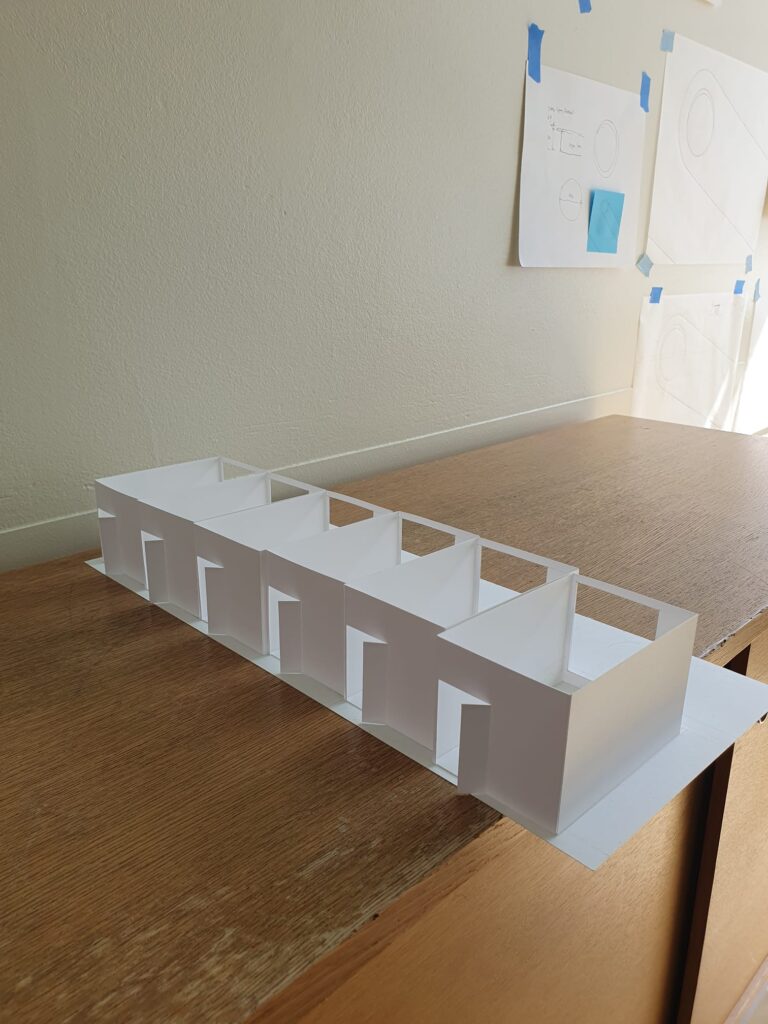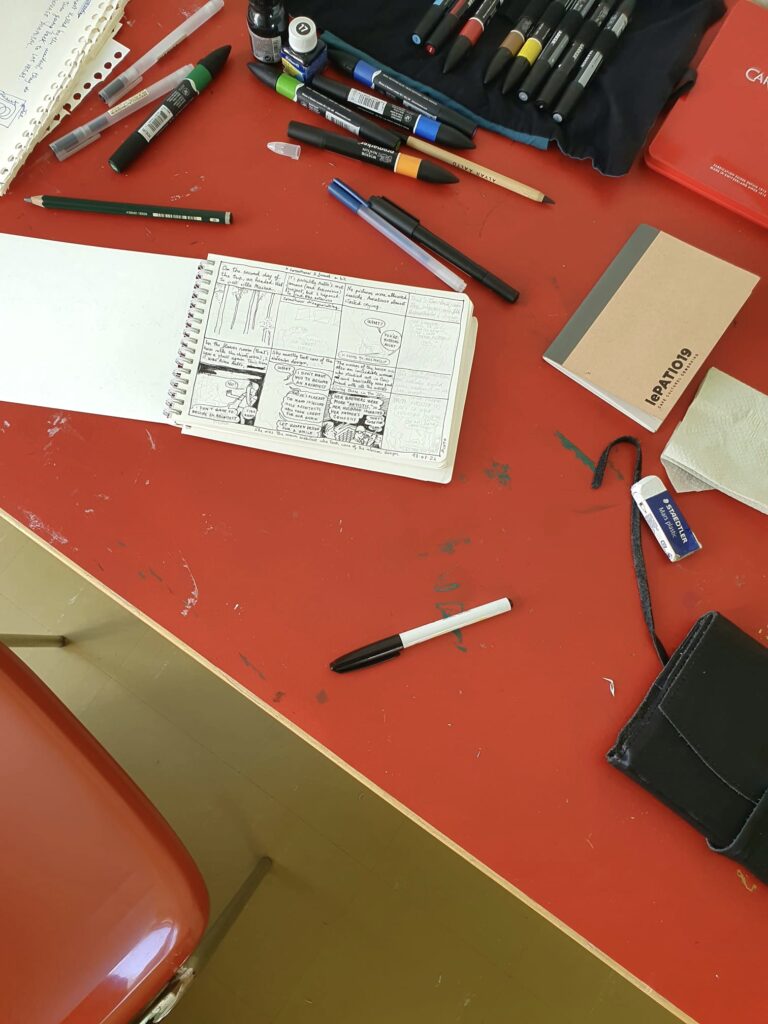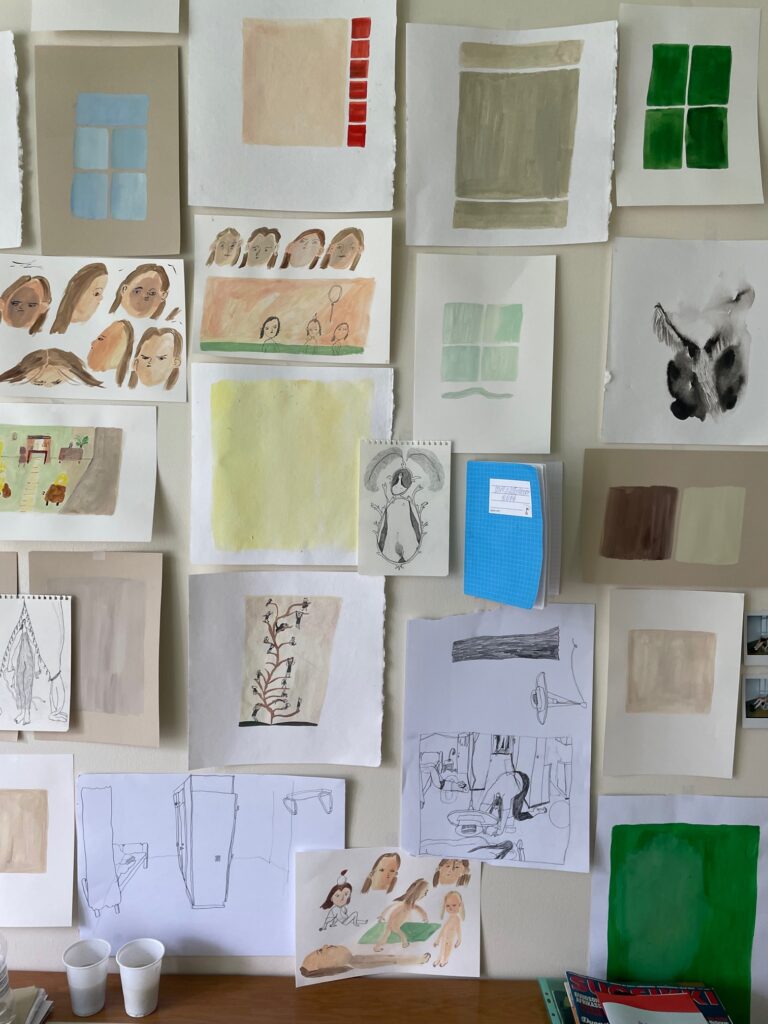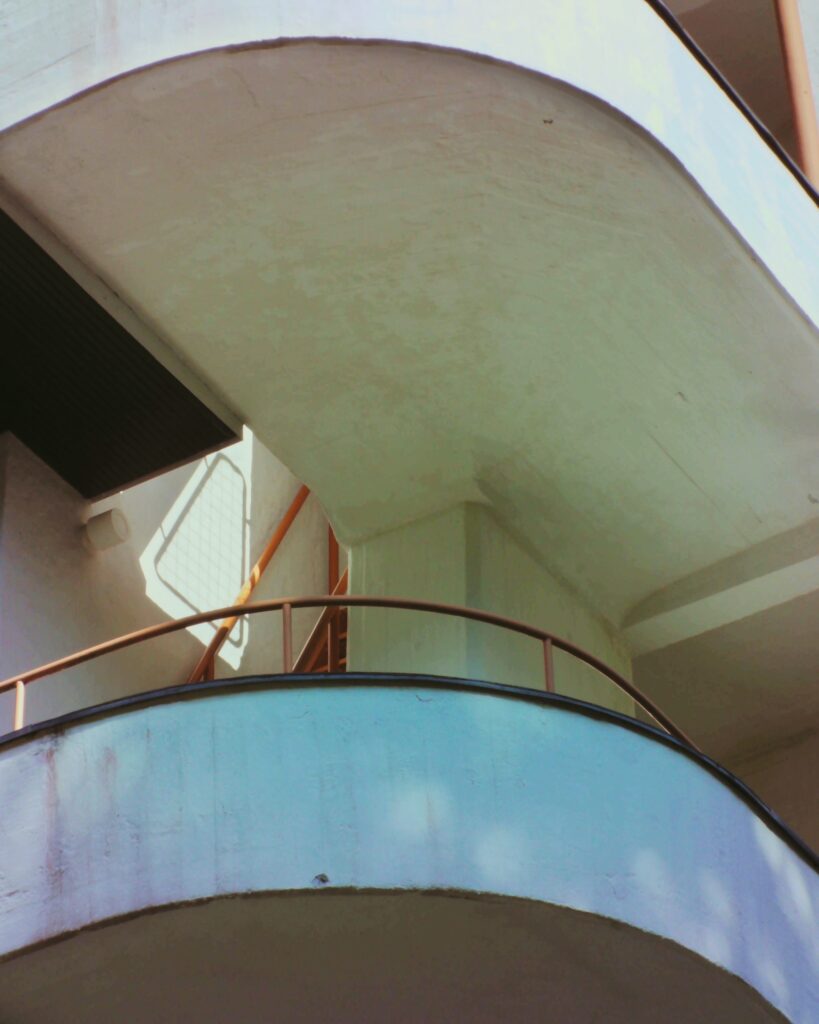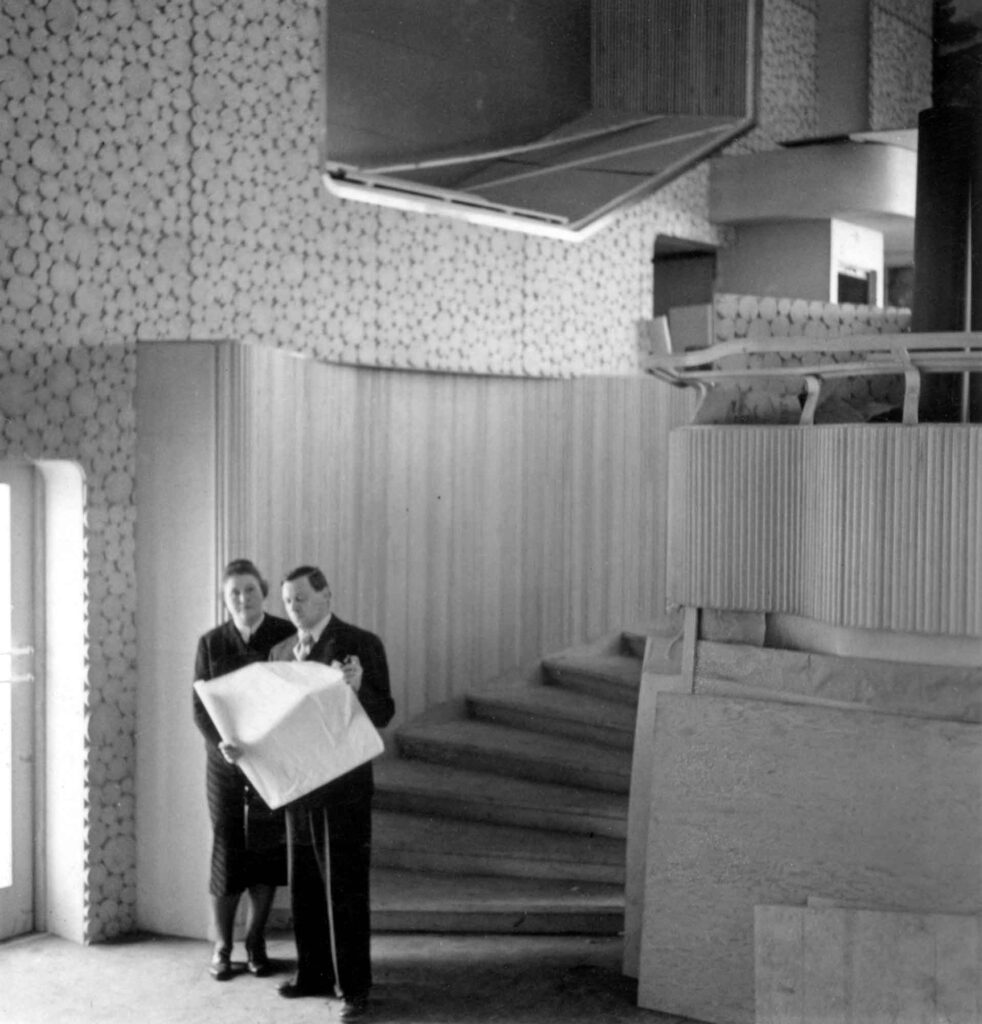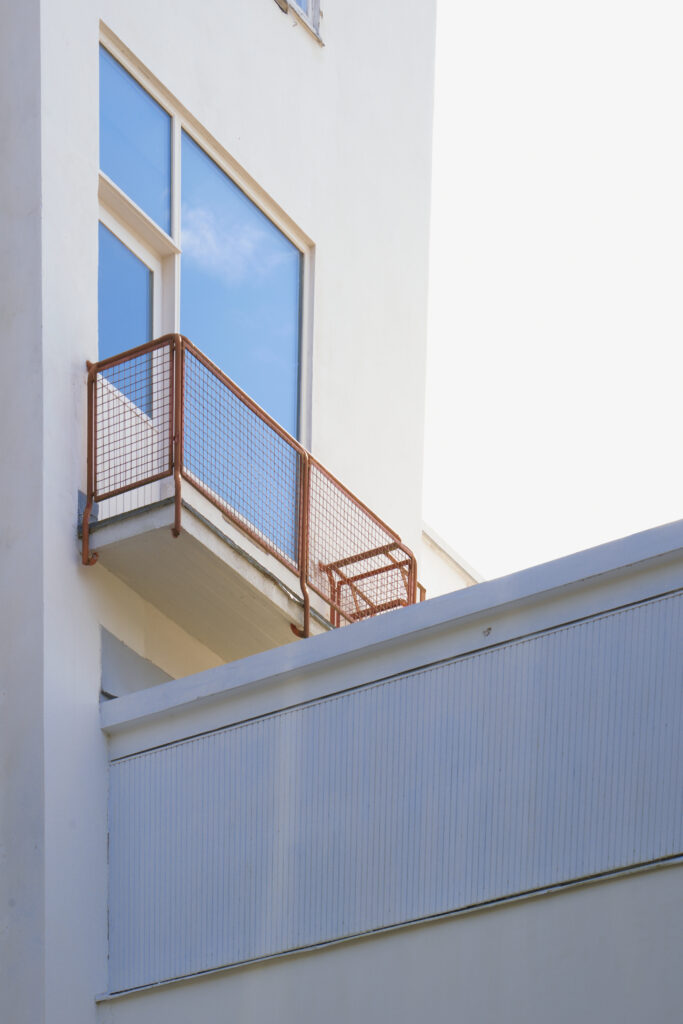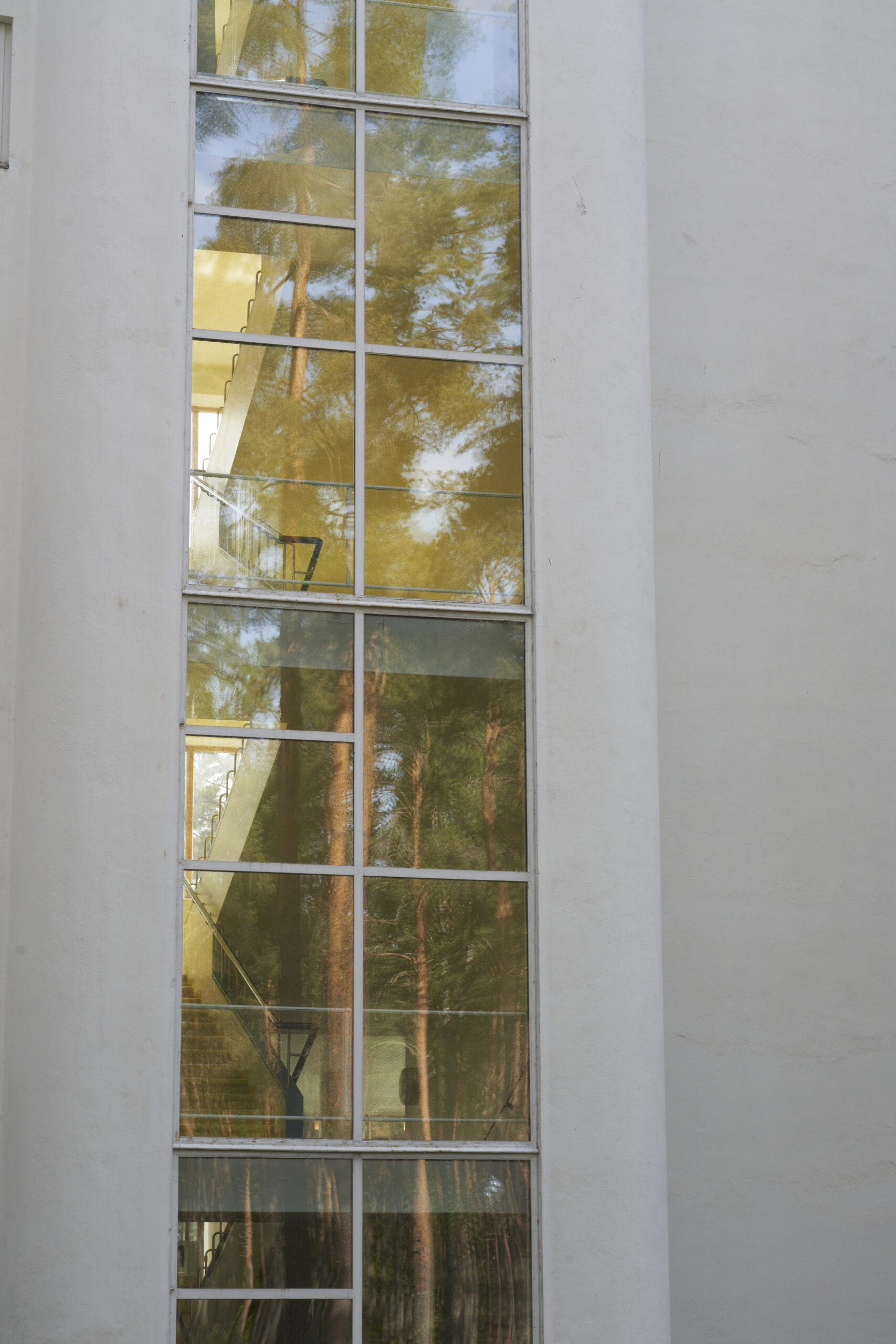Two titans from the world of art and architecture talk about the urgency of animal architecture and rootedness in architecture and for humans, and choreography and cinematic features in Alvar Aalto’s work. Conversation was held in first Spirit of Paimio Conference in 2023.
Hans Ulrich Obrist: Juhani, you are working at the moment on your 75th book. It’s fascinating because when we spoke last, in the 90s you had already written 40 or 50 books. You always said that you’ve never written fiction, but the literary tone has become more important in your writings over time. In a recent interview you said that you have a very associative style and that you write directly. Can you tell us a little bit about your practice of writing and what we can expect from your 75th book?
Juhani Pallasmaa: I never intended to write anything. I wrote my first essay in 1966. Now I have published nearly 1000 essays, but I have never planned any one of them. In retrospect people who would study my work would probably think that this guy had a plan all the way. I never had a plan of what I’m going to write next or am I going to write what someone is going to ask me to write.
Another aspect is that when I stopped practicing architecture, I didn’t really stop practicing architecture. I continued in writing architecture, and it is a genuinely identical, personal experience to write about architecture in an experiential and emotive manner. As to write it, you have to enter exactly the same area of imagination. The last 22 years I have done architecture through writing. When I began a project, new project, I went to my rather large library to look at work by other architects in the same category of task or functions. I went to my art books. I looked at paintings of early Renaissance, for instance, were the relationship of human beings and buildings is just wonderfully, childishly open and touching. Those images are most inspiring for today’s architects. Unfortunately, in schools of architecture this connection between art and architecture has broken pretty much.
Obrist: When we worked together with Hou Hanru in 1990’s on the exhibition ‘Cities on The Move’ at The Secession, later at Kiasma in Helsinki, we discussed a lot of the connection of architecture to nature. Already back then you told us that we should learn from animal architecture for the city of the future. That is something which today 26 years later is more relevant than ever before. We’ve just had an exhibition of Tomás Saraceno at the Serpentine in London. In this exhibition, that ran over the summer 2023, he not only switched off the air conditioning and put solar panels on the roof or created bicycles, which produced energy for the audio guides, but he also created a whole animal architecture with spiders. Spiders built architecture that was even a confessional, where you could confess to a spider rather than a priest. There was a spider oracle, and there were all kinds of animal architecture. I just realized again, Juhani, how incredibly important and influential your exhibition and book, ‘Animal Architecture’, is. There you revealed animal architectures parallels to human construction, but also just simply told us what we can learn from it for a more sustainable world. Can you tell us what brought you so early on to learn from animal architecture? And how you then revisited it 27 years later in 2022? How you see it today? How your take on that has changed and evolved?
Pallasmaa: I must say that I worked on that exhibition longer than any other project. I became interested in animal architecture as a four-year-old kid, when I lived with my farmer grandfather during the war for five years. There was not much to do in a solitary small farm, other than look and watch animals and human behaviour. I also didn’t have anyone to play with. So I became interested in animals.
For instance, I could watch swallows come to their nest on the other side of a log structure through a knothole from four, five-inch distance, when the bird would fly with a piece of clay in his beak. And then, before setting the piece in the nest, he would twist his head. I couldn’t figure out as a child what it was. But when, as a student of architecture, I worked on a construction site I saw the vibrator of the concrete casting men. The vibrator did exactly the same thing as the swallow did to take away water and air from the mixture so that it became stronger. I have been able to connect my personal experiences with these childhood experiences.
Now a new perspective has very much opened since scholars have found Darwin’s second book about the aesthetic choice in mate selection. This book was published eight years after the famous book on the evolution of species. In the Victorian age no one could even speak about this book. Now scientists and mathematicians have found it. They have mathematically modeled the two darwinians, put them together and explain all the evolutionary phenomena. Darwin himself had nightmares because he couldn’t fit the peacock’s tail into his first theory, but he could fit it in his second theory, which has been unknown until almost today.
It’s not only aesthetic selection in nature that has now become a matter of scholarly research. There are huge number of other things. For instance, there is a book which deals with the signal language between trees, and between trees and fungi. In one study they found bird vocabulary and they also found local dialects. The world is opening to us in a completely new way, when we are becoming a bit more open ended to our unchallenged position in nature. I don’t know if this answered your question, but for me, everything is tied together. Childhood memories, observations, readings – everything is one continuum.
Obrist: It’s a great answer and it brings us right away to the next question. It is the question of healing, the possibility, and the necessity today of architectural healing. You have often talked about your interest in biophilic design. You mentioned in a recent interview that not only via products of nature we are natural phenomena ourselves, but that actually half an hour walk in the forest cures us. Every one of us who ever walked in the forest knows that that’s the case. How can architecture do that? How can architecture be like a walk in the forest?
Pallasmaa: In my view, Aalto’s architecture is very much a walk in the forest, and he did almost unimaginable because architecture and forest have been considered and still very much are considered as exclusive opposites, but Aalto integrated the two. That is very much why his architecture has such an open narrative. It’s the same kind of narrative that nature has. You can start it from whatever end, and it reads differently every time.
Olivier Bocquet has said that architecture is somehow related with biology. He didn’t develop it verbally further than that, but he did it in his work. Now, increasingly, so we should be thinking about architecture in our evolutionary perspective. I always nowadays try to teach or tell my students, assure my students that we are all millions of years old. I’m not only 87 years old now, I’m millions of years old because I’m a the current end of an evolutionary chain and all that information is right there.
We should also, as architects, see architecture in an evolutionary time. Not only the evolution of human architecture itself, but as living persons, for instance, the need for home. The internal pressure, as you said, it’s one of the biology’s strongest emotions, desires we have. In a way much of architecture has gone away from that and it has become somewhat a quality issue. How far can you go from the feeling of home? Why even try to express it with that? Much more important is to know how this emotion of home has developed. And why is it so fundamental to our existence? I have also written sometimes that the experience of home is the experience of personal nakedness. At home we dare to take away of all protection and this should be somehow dealt with in in education, all these deep emotions.
Obrist: What you said about home brings us also to something. I’m very interested in this aspect of rootedness and the necessity for rootedness because of course it also brings us to Édouard Glissant, the Martinican philosopher and thinker. He said that it’s very important that we are rooted, that we are we are local, but only as long as it is not about alienating other people’s roots so that we remain tolerant always for different roots and protect each other.
The notion of the local is very complex because we have so many localisms and nationalisms in the world right now which are not tolerant. The late Bernard Stiegler, the philosopher said how can we be local without falling into this trap of being localist. So I wanted to ask you to tell us more about your vision of rootedness.
Pallasmaa: ‘Rootedness: Reflections for Young Architects’ is the title of my new book book. By the title I mean the personal rootedness in one’s own historicity. Beyond cultural historicity is biological historicity, being rooted in the phenomena of life, because that’s the field in which architecture deals. Unless an architect feels rooted in the world that he or she operates with it becomes, I would say irresponsible. Rootedness today also means rootedness in culture, particularly Western culture, the culture of poetry, philosophical thinking, novels, painting, everything, history of science, all of that is part of rootedness. And I think that rootedness is the precondition for wisdom. And wisdom is the highest human quality. We should all try to achieve wisdom. I’m trying to write and speak about the ways how to achieve wisdom.
Obrist: This is very beautiful. Now, I want to come back to Aalto, because, of course, the Paimio Sanatorium is everything but the static object. It’s not at all a static object. You said that that’s not only in Aalto, but also a fundamental idea of John Dewey, who was also a great inspiration for me via Alexander Dorner. Dewey says that the artistic dimension does not necessarily remain confined to an object, but the artistic component as you interpreted it, is a mental thing. It’s in a unique experience. It’s something which is alive, which is dynamic. And, and you go further by saying, Alvar Aalto’s buildings not only are alive, but they’re actually cinematic in their choreography, which is very true for the Paimio Sanatorium. There is a choreography of movement and articulation of scale and intimacy.
I always remember, we discussed this connection between architecture, Aalto and cinema in Helsinki in 90’s because the night before I met you, I went to see Aki Kaurismäki. It was outside Helsinki and we were smoking a fish in his garden. It was an extraordinary experience. He basically talked about in a similar way about choreography of movement. So, I wanted to ask you to somehow explain this idea of a building not being static, how it all relates to John Dewey, and then maybe also fleshing out this connection between a building like Paimio and cinema, the cinematic aspect of such a building.
Pallasmaa: I often say to my students that architecture is choreography and that it is choreography in a very precise, analog way. The architect choreographs movements, observations, experiences, emotions, feelings exactly in the same way as a choreographer does in dance or ballet or a composer does in his or her work of composition.
Also in architecture, in addition to physical movement, there is a movement or choreography in perceptions and emotions. Aalto’s work almost always is a kind of a theatrical piece. With acts there is the act of entrance, which has a certain mood and themes. Then there is the next act, arrival. Third one is arrival at the final point, the theater or lecture hall and so forth. Good architects do think in choreographic terms as continuities. This, of course, is same as in cinema.
Rem Koolhaas has written quite impressively about the analogue between cinema and architecture. I know Aki Kaurismäki and his work somewhat. I have written a couple of essays on his films. He’s a minimalist. The work is very emotional, but on surface it appears almost too minimal. That’s also my understanding of architectural minimalism. It is minimalist on a formal level, but maximalist on an emotional level. You can achieve maximum emotion only through minimal expression.
Obrist: Cinema also brings us to time. Artist Robert Rauschenberg told we need to introduce time more into art because it’s more about space historically and not about time. He mentions Rauschenberg, who referred to his paintings as clocks. You have also in lectures spoken about how time is important and also how an architectural experience can almost suspend time. You have said we have a frustrated relationship with time due to our fear of death. We can control space, but we cannot control time. Time is overpowering. You also mention the importance of time for art and architecture to maybe slow us down in, in these very accelerated times.
Pallasmaa: I spoke about the flatness of the idea of newness. For me, newness in the arts and architecture is important to evoke timelessness or the endlessness of time. It is for the purpose of achieving the reverse of what we believe it to be. Much of our architecture today is not at all conscious of the second task of architecture, to relate us to the reality of time; date, time and duration and simultaneity of time. That’s what he’s interested in. Arts and architecture are the simultaneity of the past and the present and the future. I think that’s the way an artist thinks about time.
Obrist: Now I do have to ask a last question, if I may, because it’s the only recurring question in all my interviews. It’s about the unrealized project.
Pallasmaa: Well. I don’t have any unrealized projects. Because the projects I do are the processes that I make. So even when the building drawings might not be executed, it’s still as in my role executed. We have to finish here, but next time when we meet, I’ll give you a longer answer.
___
Photo: Juhani Pallasmaa on Spirit of Paimio Conference 2023 stage by Guy Bolongaro.


